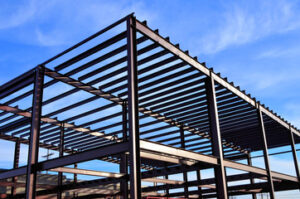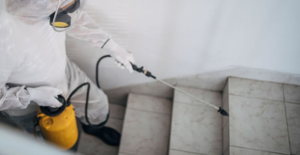Metal Buildings are rapidly becoming the construction standard across America. Their beauty, durability, and efficiency are unmatched by other materials. They resist harsh weather conditions and natural disasters, are termite-proof, and offer long-term cost savings through energy efficiency.

The pre-engineered nature of Metal Buildings minimizes waste on-site and reduces construction costs. They also make it easy to integrate solar panels, allowing for green energy production and decreasing dependence on fossil fuels. Visit https://www.oksteelbuildings.com/ to learn more.
When it comes to construction, the type of building you choose can have a significant impact on your facility’s safety, durability, and cost. Metal buildings are an excellent choice for a variety of purposes, including warehouses, garages, and storage units. These durable structures are designed to withstand harsh weather conditions and other environmental factors. They are also fire-resistant and easy to maintain. Additionally, they can be customised to meet local codes and load bearing capacities.
Steel buildings are durable and versatile. They can be constructed for residential use, as well as commercial and industrial purposes. They can be designed to withstand high winds, snow loads, and seismic conditions. They are also very affordable, making them an excellent choice for construction projects that require quick turnaround times. In addition to being highly customizable, metal buildings are also resistant to pest infestations and other problems that can affect other materials.
One of the most common uses for metal buildings is as warehouses, which are ideal for storing goods and equipment. They are also fire-resistant and durable, which makes them a good choice for warehouses in areas prone to wildfires. They are also easy to customise and can be built in any size or shape.
Another use for metal buildings is recreational centers and gyms. These buildings offer a large, open space that can accommodate indoor sports courts, swimming pools, and fitness facilities. They are also durable and can withstand heavy traffic. These buildings can be insulated to help maintain a comfortable temperature and reduce energy costs.
When choosing a contractor to build a metal building, make sure they are familiar with metal construction and have experience creating commercial buildings. This is important because residential contractors will not be able to meet the unique requirements of a metal building. In addition, they should be familiar with the different types of steel buildings and their varying applications.
Aesthetics
Aesthetics and design are a key factor in the success of any building, and custom metal buildings offer plenty of opportunities to make a statement. Unlike traditional construction, metal can be formed into a variety of shapes and covered in different coatings, providing endless possibilities for visual appeal. This flexibility also allows designers to incorporate elements like porches and balconies into the structure, creating a more inviting exterior that blends seamlessly with its surroundings.
Color plays a crucial role in the aesthetics of any building, and metal buildings are no exception. They can be painted in a wide variety of colors, from neutral tones to bold and vibrant shades. Choosing the right color scheme can create a sense of harmony and balance while reflecting the purpose of the building. In addition, the use of certain colors can influence the way occupants feel about the building. For example, light colors reflect sunlight and can help reduce cooling costs. Darker colors, on the other hand, absorb heat and can be beneficial in colder climates.
Whether you’re looking to build a small shed or a sprawling commercial facility, metal has the ability to accommodate a variety of designs that blend functionality with art. Aesthetics and design are becoming increasingly important in the world of architecture, and metal buildings are uniquely positioned to provide both.
While aesthetics are often overlooked in the world of steel buildings, there are many ways to enhance your metal building’s visual appeal. Some of these add-on features include security cameras, skylights, and decorative panels. Incorporating these elements into your steel building will not only make it more visually appealing but also increase its function and security.
Recyclable materials
In addition to being eco-friendly, metal is also less susceptible to rot and pests, so it requires less maintenance over time. Additionally, steel is recyclable when it comes to the end of its lifecycle, which helps contribute to a circular economy and reduces the need for extracting new raw materials. This makes it an ideal material for a sustainable home.
The pre-engineered building industry has made significant strides in becoming more environmentally friendly. Many pre-engineered metal buildings are designed and fabricated off-site, which significantly reduces the amount of waste generated by the construction process. Furthermore, metal building components are shipped to the site with minimal packaging and shipping materials. This can help the builder earn points towards LEED certification, a green building rating system.
Another advantage of a metal building is that it can be easily expanded to accommodate a growing business. It is much more durable than traditional construction materials, so it can withstand high winds and heavy snow loads. Moreover, it is non-combustible, which makes it an excellent choice for areas with a high risk of wildfires.
Moreover, the fact that steel is one of the most recycled materials on Earth means that most of the metal used to make a pre-engineered metal building can be recycled at the end of its lifecycle. This reduces mining waste and water pollution and saves energy by avoiding the need to remelt steel.
Additionally, it is possible to use recycled steel to create a brand new steel building without any issues with structural integrity. This is because reusing steel beams that are in good condition eliminates the need for remelting and reduces the carbon footprint of a building by reducing energy costs.
Energy-efficient design
Energy efficiency is a growing priority for building owners. The right improvements can help reduce operational costs, create a more comfortable environment, and promote sustainability. By focusing on thermal performance and insulation, incorporating renewable energy systems, and optimizing equipment and lighting, metal buildings can make a positive impact on the environment while saving money on utility bills.
One of the best ways to cut energy costs is to install smart HVAC systems that use programmable thermostats and other energy-saving features. Another option is to use LED lights, which are more efficient than traditional bulbs and last much longer. It’s also important to ensure that all appliances and equipment have the ENERGY STAR rating.
Insulation is a crucial component of energy-efficient design, as it minimizes heat transfer and keeps the building cool in summer and warm in winter. Pre-engineered metal buildings come with a variety of insulation options, including factory-insulated walls and ceiling panels. These panels feature a high R-value and meet the IECC and ASHRAE 90.1 requirements for continuous insulation.
Other energy-efficient features include a roof coating that reflects sunlight and reduces heating costs, deep wall cavities that make it easy to insulate the building, and lack of gaps that can increase air loss. Additionally, clerestory windows and skylights can reduce the need for artificial light during the day.
Finally, it’s essential to make sure that HVAC systems are properly sized for the size of the building and regularly maintained. HVAC systems that are oversized consume more energy than those that are sized appropriately. In addition, the metal construction of a metal building can expand and contract with temperature changes, so proper expansion joints are needed.
Versatility
Pre-engineered metal buildings are a versatile solution for a variety of construction needs. From large warehouses and agricultural storage facilities to contemporary residences, these structures offer the flexibility homeowners are looking for in their next building project. They’re designed with local codes and loads in mind, so they can be built to withstand extreme weather conditions while still being durable.
Because they are constructed in a factory, metal building kits come ready to assemble when they arrive at the building site. This saves time on the construction site and helps reduce costs by reducing equipment and man-hours. Additionally, a kit can be put together faster than a traditional wooden structure because the components are already pre-punched and produced to length. This makes the process easier for contractors and allows the building to be occupied more quickly.
Moreover, metal buildings offer flexible floor plans and unique exterior finishes that allow builders to create beautiful, customized homes. Their modern aesthetic has become a popular choice among homeowners, and the ability to integrate large windows into the structure means that they can be adapted to fit any design style. This flexibility is not always possible with other types of buildings, as they are often limited by environmental concerns and structural limitations.
The versatility of pre-engineered metal buildings is transforming the future of construction. Their versatility, quality, durability, and cost-effectiveness make them the ideal choice for a wide range of applications. From residential storage and garages to industrial workspaces and commercial buildings, these structures are a versatile, durable, and cost-effective option for any construction project. If you’re considering a metal building, talk to a contractor who has experience with this type of construction. They will be able to recommend the best options for your specific needs and give you an accurate idea of how much it will cost.
